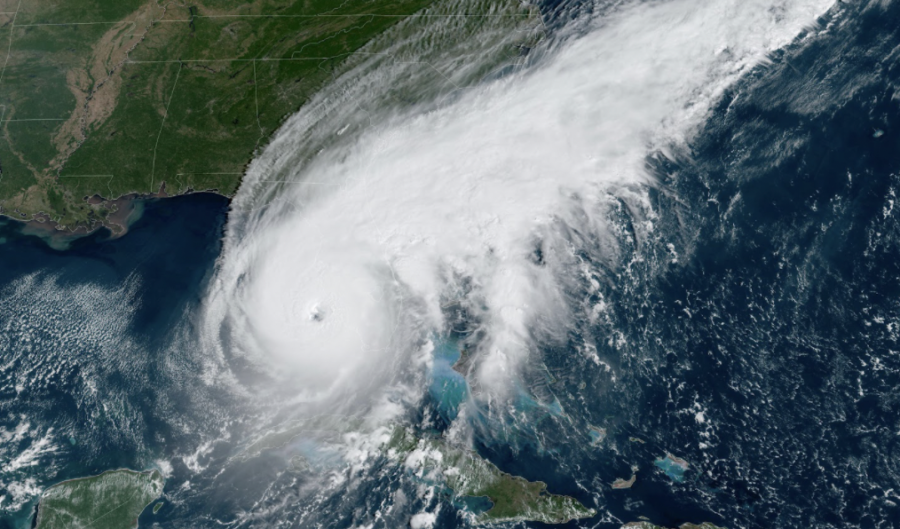Tearing it up: The evaluation of damage and trauma from hurricane Ian
The winds are blowing at over 150 miles per hour. It’s almost dark, there’s a storm. The only light was coming from the distant sun. There’s officially no power, they can not make food, can not call anyone. They’re scared, they’re shaking, they’re cold, and they are contemplating life, wondering if they’re ever going to see their loved ones again.
The category four hurricane, Ian, has been tracked around Florida’s Southwestern Coast. Ian’s initial landfall was on Tuesday, September 27 in Cuba. It immediately took out the power leaving the entire island without. The storm was originally ranked a category three and quickly advanced to a four.
Hurricanes are serious, but they are serious on different levels.
According to Riotglass, “Category 1 hurricane: hazardous winds will produce some damage, Category 2 hurricane: extremely dangerous winds will cause extensive damage, Category 3 hurricane: devastating damage will occur, Category 4 Hurricane: catastrophic damage will occur, Category 5 Hurricane: catastrophic damage will occur.”
All of the different categories will cause an extent of damage, however, extreme cases or higher categories can cause catastrophic damage, this means that buildings will sustain massive structural damage, potentially losing most of the roof structure and parts of exterior walls.
There is a very high risk of injury and further storm damage due to falling and flying storm debris and most trees and power poles will be downed. Power outages and water shortages can make areas uninhabitable for weeks or months
There are approximately three million people who were affected in some sort of way by Hurricane Ian.
Even those who are not living in the physically affected areas can still be greatly affected. Under instances such as family, friends, past homes, pets, etc.
A student at Highlands High School, Sophomore Julia Luhn’s, entire side of her dad’s family lives in West Melbourne, Florida.
Luhn’s grandparents stayed down in Florida and prepared for the storm while her aunt, uncle, and cousins simply took a vacation.
“My grandma and grandpa boarded up their windows, collected water bottles and containers of water, cleared their front and back yard, and collected food,” Luhn stated.
Additionally, a teacher in the building, Elizabeth Fahlbush, has a family that lives in Inglewood, Florida. Her sister, brother-in-law, and two little nieces. As the path of the hurricane redirected itself, they were right on the predicted course of the storm. They did not evacuate.
Fahlbush expressed “We were all kind of traumatized by the situation… It took them about a week to prepare the house, so they do have storm shutters, they boarded up what they did have shutters for… luckily their house was built with some of the new hurricane construction provisions in place”.
Fortunately, her family’s house was built after Hurricane Andrew, and their house “ended up fairing the best”. They didn’t see as much damage as some of their neighbors. Unfortunately, the remaining houses on the street were older and did not have some of the new hurricane protocols that more contemporary houses do.
The entire town is going to need to be rebuilt. No one knows when jobs, schools, power, or water will be up and running again. It feels like the end of the world for them.
Fahlbush stated, “They will evacuate next time.”
Your donation will support the student journalists of Highlands High School. Your contribution will allow us to cover our annual website hosting costs.



